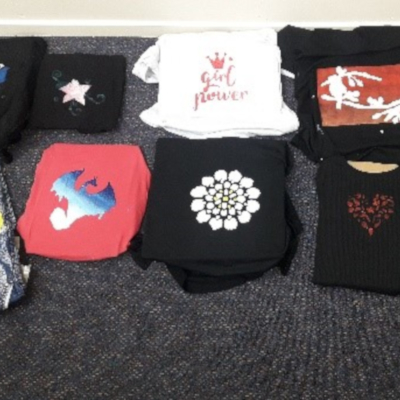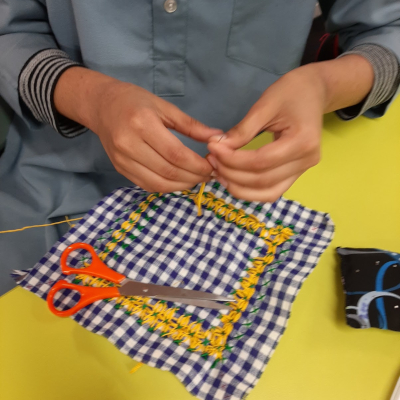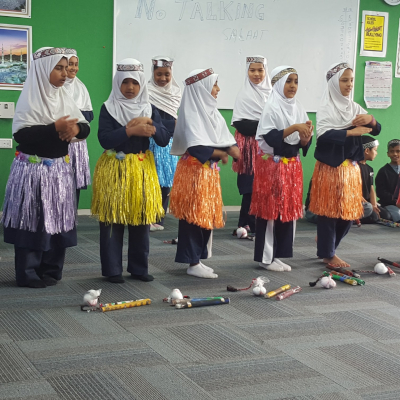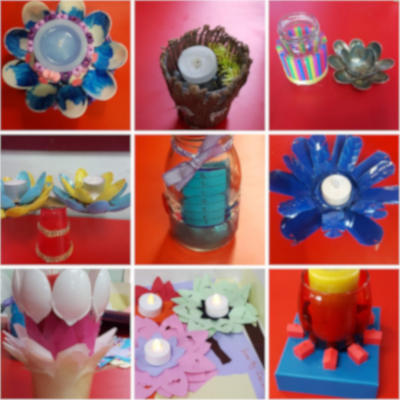The Arts

Brief Description
The arts through its distinct language of verbal and non-verbal conventions are unique and powerful medium of expressing student’s feelings and values to the outer world without losing focus on the special character of this institution and the multicultural characteristics of our magnificent country. Here, the learners transform their creative ideas and thoughts into magnificent productions using sound, image and movement.
Rational
To enhance the learner’s well-being and self-confidence by engaging them to work independently and collaboratively in order to acquire unexpected outcomes. We anticipate the students will explore appropriate solutions to worldly crises through the development of arts literacies and become efficient listeners, viewers, creators and presenters. We foster our motivated learners value arts in their lives and arts become one of their career paths.
Structure of Arts at Al-Madinah School.
The Arts focusses on drama, dance, music and visual arts based on special character of the school. Each discipline is structured around four interrelated strands: Understanding the Arts in Context, Developing the Practical Knowledge, Developing Ideas and Communicating and Interpreting Knowledge in the arts.
Assessment
Effective assessments is integral to Arts program. Teachers determine the context and purpose of assessment and gather the information accordingly. Usually in every unit of work, the teachers use achievement objectives to report on students’ achievement and their progress. These practices are in line with the school’s assessment policies and relate to our customs, traditional values, community knowledge and resources.
Arts Student’s Activities
Primary
The arts is the process of teaching and learning how to create and produce the visual and performing arts and how to understand and evaluate art forms created by others. In the arts, students learn to work both independently and collaboratively to construct meanings, produce works, and respond to and value others’ contributions.
Arts education values young children’s experiences and builds on these with increasing sophistication and complexity as their knowledge and skills develop. Arts are incredibly important for all schools and all types of students to think and act creatively as well as innovative way for student to problem solve. They include music, theatre, sculpture, drawing, creative writing, design, construction.
Intermediate
Years 7 and 8
The four conceptual strands are:
Visual Arts, Drama, Music and Dance.
The topics studied are:
Visual Arts – Water colours, oil colours, colour wheel, scenery painting using watercolours, and scenery painting using oil painting.
Drama – Director’s cut.
Dance – Body movement, African dance, dancing on the clock, New Zealand and Pacific Islands haka,
Music – Place of music in Islam, nasheed, hamd, national anthem, school song, waita, Musical instruments.
Years 9 and 10
The four conceptual strands are:
Visual Arts, Drama, Music and Dance.
The topics studied are:
Visual Arts – Still life, pencil sketching demonstrating shade and tone, screen printing, cultural arts and craft work.
Drama – Fractured fairy tale and Darkwood manor.
Dance – Research and power point presentations on history and forms of cultural dances and New Zealand and Pacific Islands haka. Body movement, African dance, dancing on the clock,
Music – Research and power point presentations on place of music in Islam, various Muslim artists, ancient and modern musical instruments. Singing nasheed, hamd, national anthem, school song and waita,
Assessment
Effective assessments is integral to arts program. Teachers determine the context and purpose of assessment and gather the information accordingly. Usually in every unit of work, the teachers use achievement objectives to report on students’ achievement and their progress. These practices are in line with the school’s assessment policies and relate to our customs, traditional values, community knowledge and resources.




